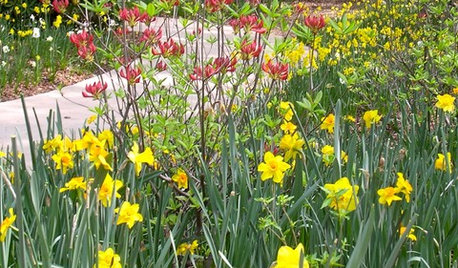UMass Extension Landscape Message April 6, 2012
claireplymouth z6b coastal MA
12 years ago
Related Stories

FUN HOUZZDoes Your Home Have a Hidden Message?
If you have ever left or found a message during a construction project, we want to see it!
Full Story
GARDENING AND LANDSCAPINGReaders' Choice: The 10 Most Popular Outdoor Spaces of 2012
All in the courtyard, please rise — these favorite patios, yards and decks deserve your full attention
Full Story
GARDENING GUIDES6 Plants That Beat Butterfly Bush for the Wildlife Draw
It's invasive, a nonnative and a poor insect magnet. Check out these better alternatives to butterfly bush in the garden
Full Story
GARDENING AND LANDSCAPINGHouzz Survey: See What Homeowners Are Doing With Their Landscapes Now
Homeowners are busy putting in low-maintenance landscapes designed for outdoor living, according to the 2015 Houzz landscaping survey
Full Story
FRONT YARD IDEAS10 Ideas for a Front-Yard Edible Garden Your Neighbors Will Love
Choosing attractive, well-mannered plants and sharing the bounty will go a long way toward keeping the peace
Full Story
PATIO OF THE WEEKWater and Fire Mingle in a Canadian Front Yard
If the illuminated moat winding through this Ontario patio doesn't dazzle you, the 8-foot-wide fireplace will
Full Story
SPRING GARDENINGSpring Fling: Visit a Garden in Full Glory
The Atlanta Botanical Garden is blooming three weeks ahead of schedule. Come take a peek with us
Full Story
DECORATING GUIDESCalifornia Law: License to Practice Interior Design?
A proposed bill that would require a license to practice interior design in California has Houzzers talking. Where do you stand?
Full Story
GREEN BUILDINGThe Future of Smart Design: Reuse, Reduce, Recycle
See why reducing waste in a home construction project should appeal to every architect, designer and client
Full Story
GARDENING GUIDESHow to Find the Right Native Plants for Your Yard
Find plant maps, sale sites and guides that make going native in the garden easier than ever
Full StoryMore Discussions








pixie_lou
claireplymouth z6b coastal MAOriginal Author
Related Professionals
Westwood Landscape Contractors · Caldwell Landscape Contractors · Deerfield Beach Landscape Contractors · East Chicago Landscape Contractors · Mesa Landscape Contractors · Ringwood Landscape Contractors · Tyngsboro Landscape Contractors · Crowley Landscape Contractors · Clermont Decks, Patios & Outdoor Enclosures · Draper Decks, Patios & Outdoor Enclosures · Fishers Decks, Patios & Outdoor Enclosures · Midwest City Decks, Patios & Outdoor Enclosures · Novi Decks, Patios & Outdoor Enclosures · Pueblo West Decks, Patios & Outdoor Enclosures · Westfield Decks, Patios & Outdoor Enclosuresdekprizm
claireplymouth z6b coastal MAOriginal Author